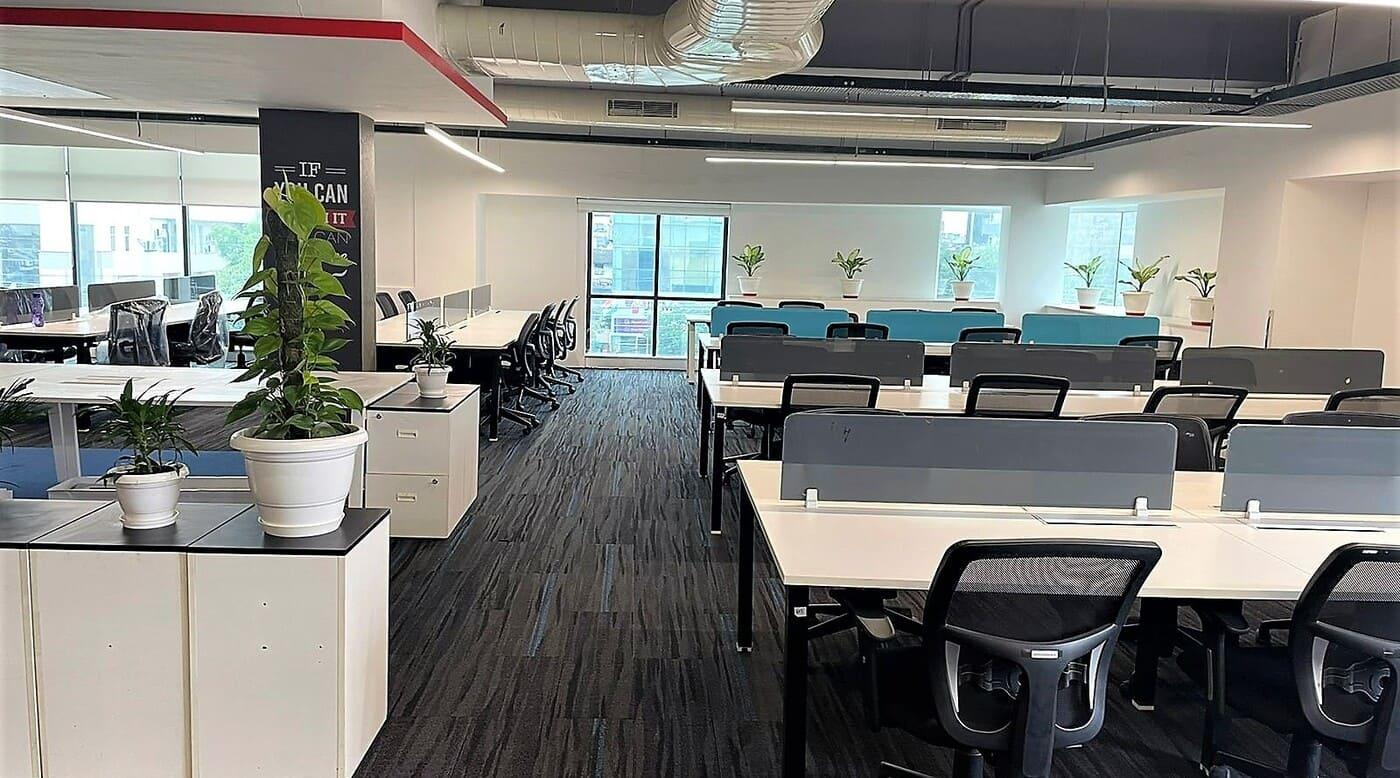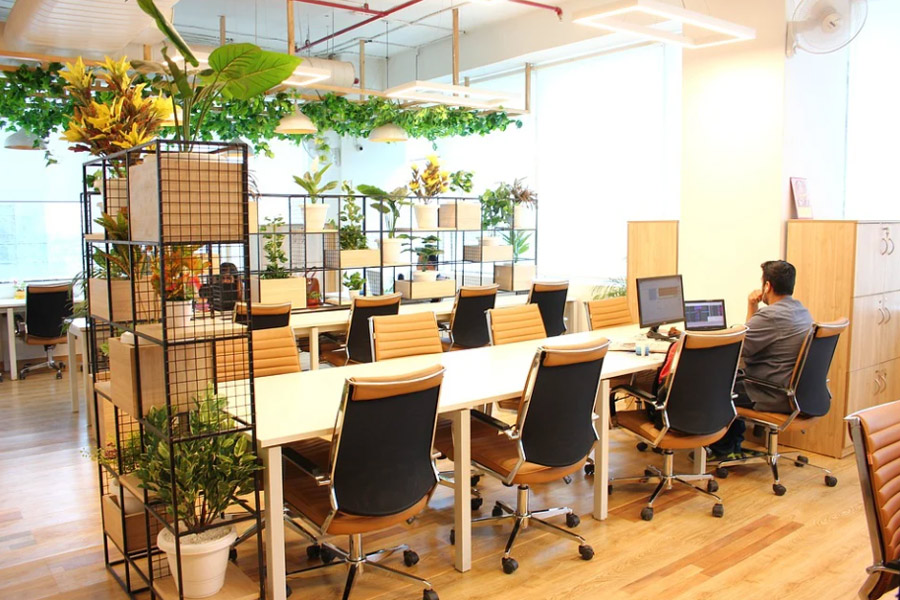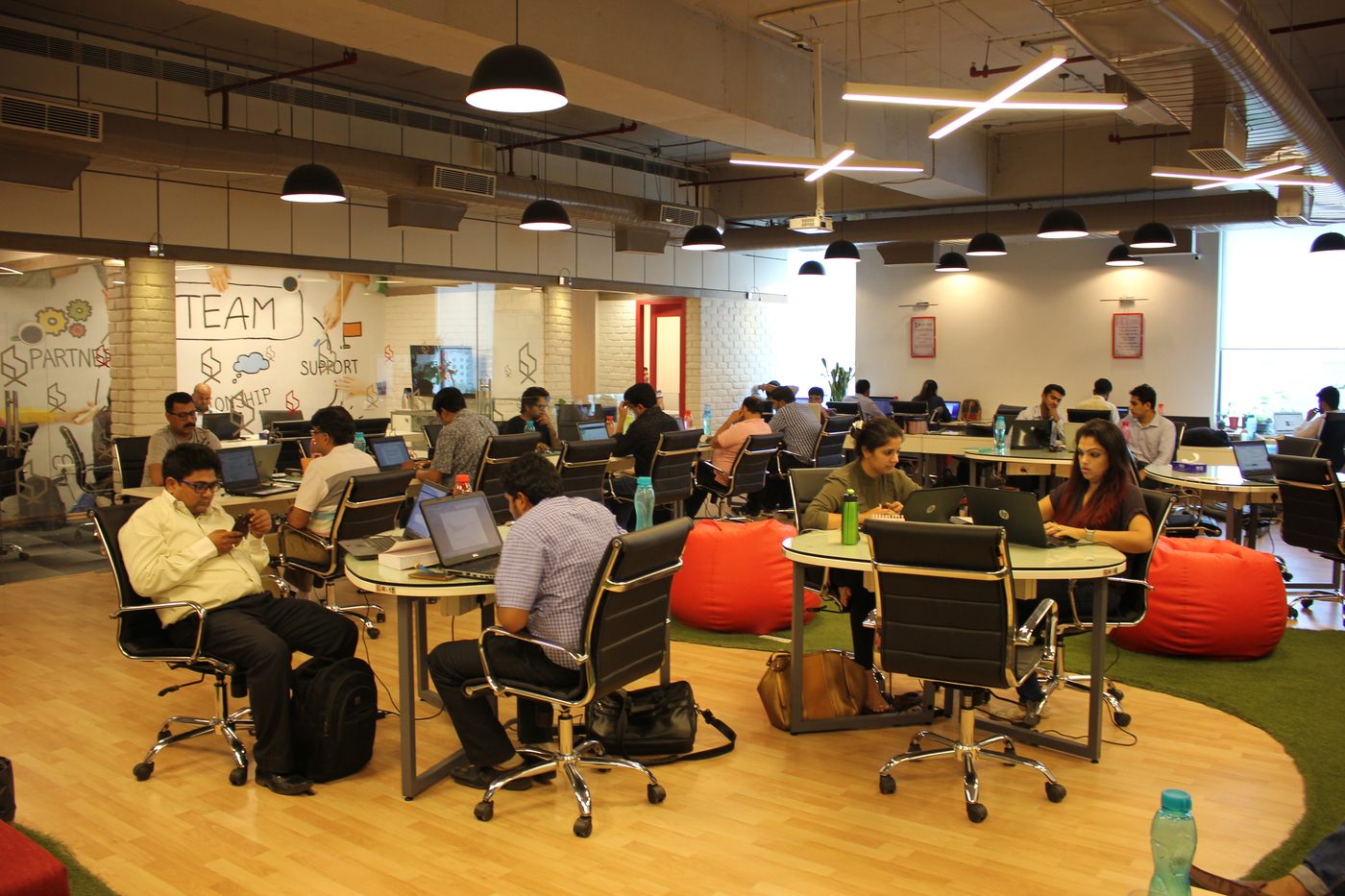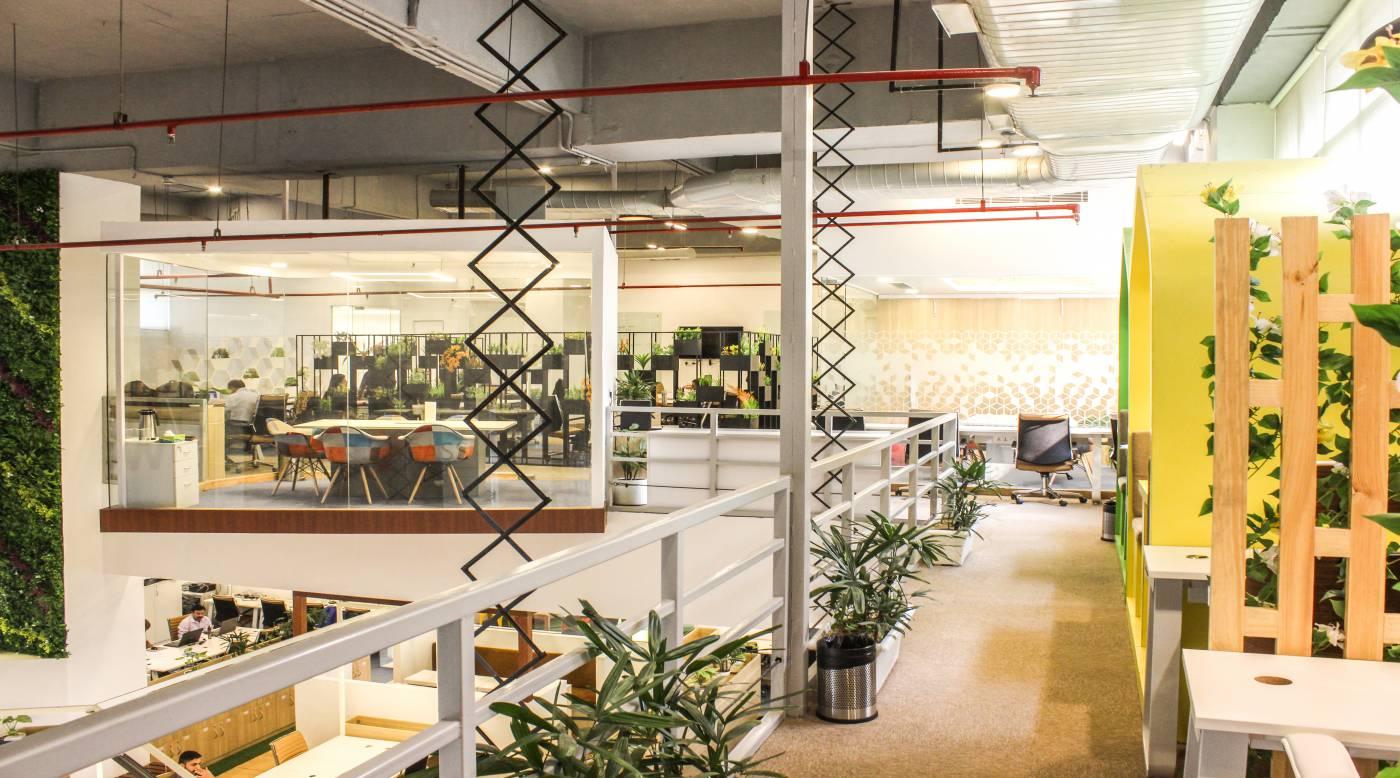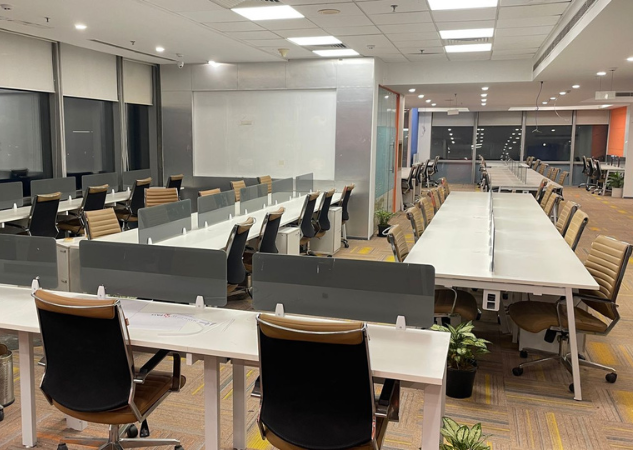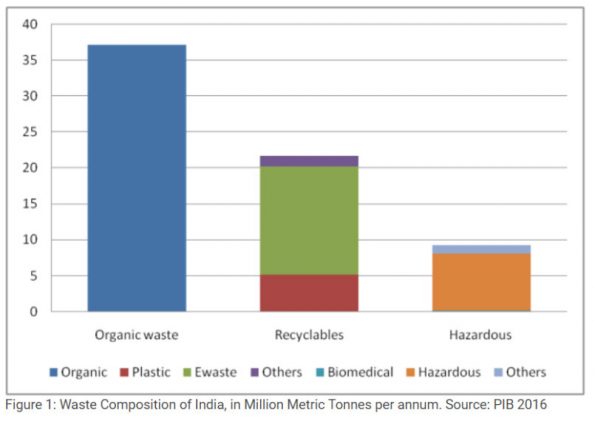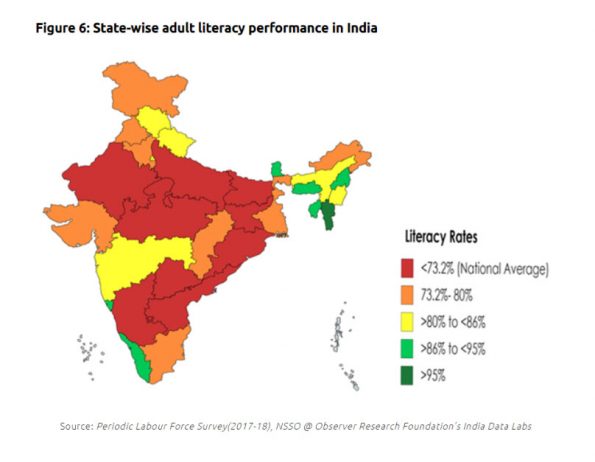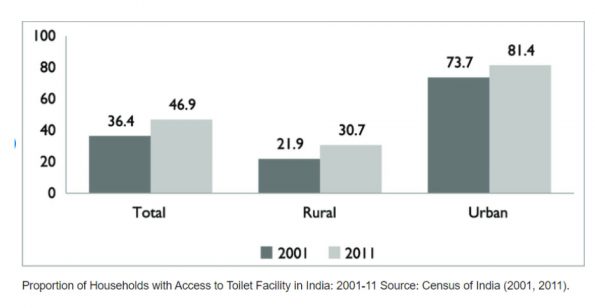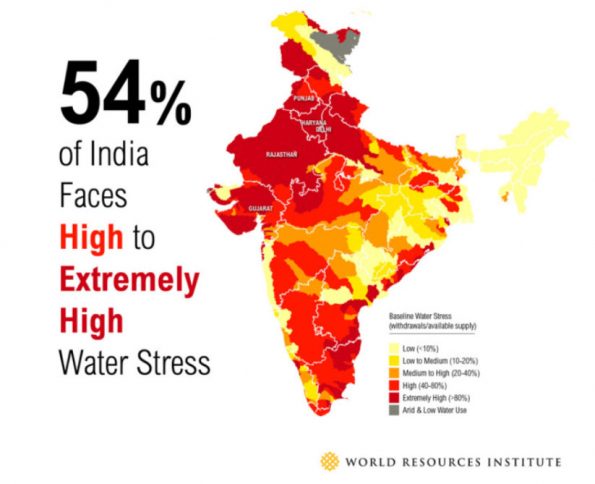There are endless reasons that make managed workspaces a favourable option for hybrid workspace models. A hybrid workspace model typically involves a combination of remote work and in-office work. Managed workspaces provide the flexibility and support needed to make the hybrid model successful. In this post, you will learn about some reasons why managed workspaces are often considered the best option for hybrid workspace models.
💡 Are you looking for Coworking space in Gurgaon, Noida or Delhi? We are just a call away.
Call Now: 08999 828282
10 Reasons why managed workspaces are best option for hybrid workspace modes
- Flexibility
- Remote Accessibility
- Scalability
- Tech Infrastructure
- IT Support
- Collaboration Spaces
- Security
- Cost Efficiency
- Employee Experience
- Adaptability to Change
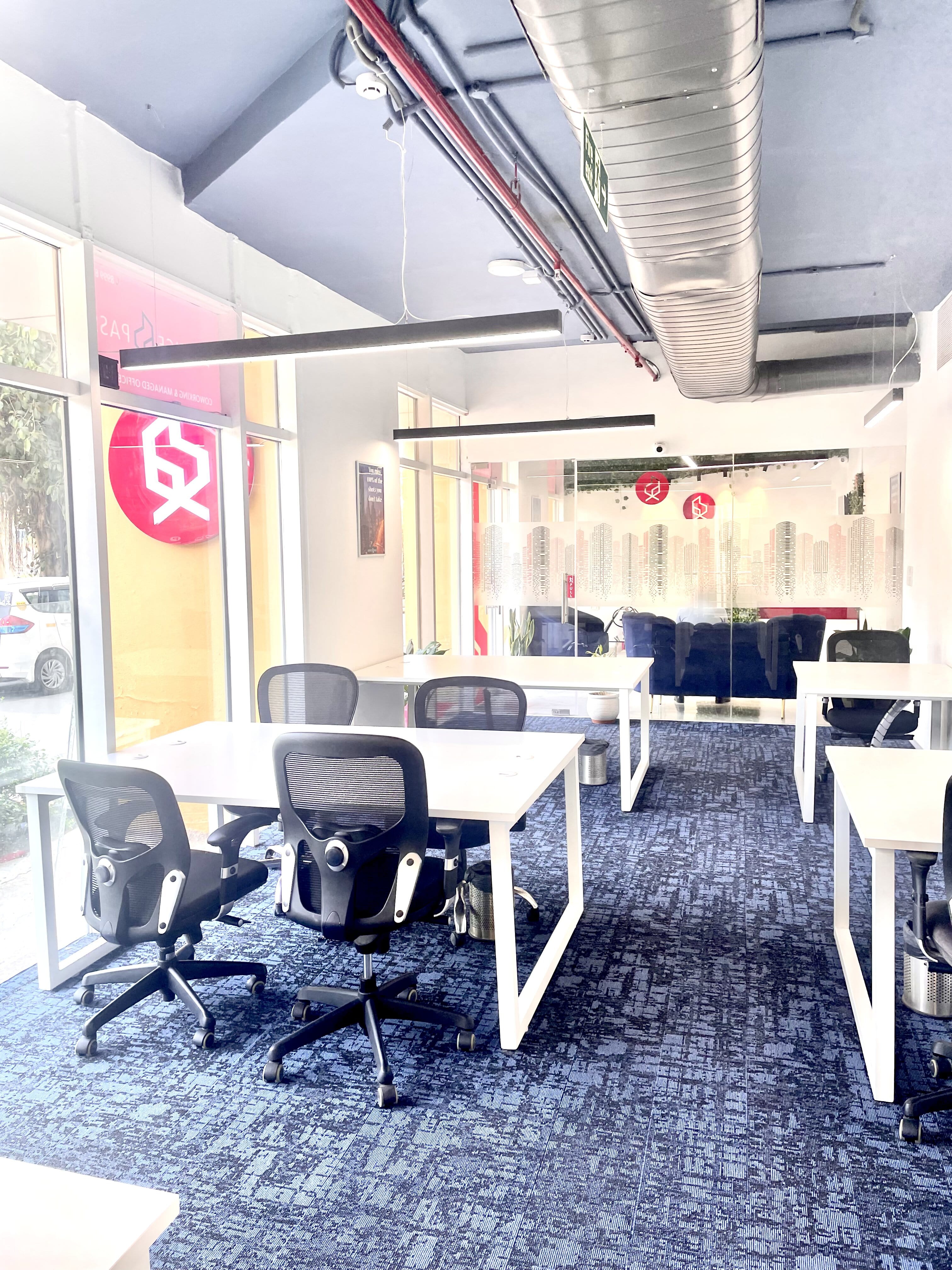
1. Flexibility
Managed workspaces offer the flexibility to scale up or down based on the organization’s needs. This is crucial for a hybrid model where the number of employees working in the office may vary.
2. Remote Accessibility
Managed workspaces often come equipped with the technology and infrastructure needed to support remote work seamlessly. This includes high-speed internet, collaboration tools, and secure access to company resources.
3. Scalability
Organizations can easily scale their office space up or down based on their workforce requirements. This adaptability is essential for a hybrid model, where the number of employees coming to the office may change over time.
4. Tech Infrastructure
Managed workspaces typically provide advanced technology infrastructure, ensuring that employees have access to the latest tools and resources, whether they are working in the office or remotely.
5. IT Support
Another reason why managed workspaces are the best option for hybrid workspaces is because they often include on-site or remote IT support. This ensures that employees have assistance with any technical issues they may encounter. It is crucial for maintaining productivity in a hybrid work environment.
6. Collaboration Spaces
Managed workspaces are designed to facilitate collaboration. They often provide dedicated collaboration spaces, meeting rooms, and other facilities that support teamwork, which is essential for a hybrid model where team members may be working in different locations.
7. Security
At the same time, note that managed workspaces typically have robust security measures in place, both physical and digital. This is crucial for protecting sensitive company data, especially when employees are working from various locations.
💡 SMBs looking for HR, Marketing, Technology and Funding solutions for their business.
Call Hello Jarvis 994 8000 800
8. Cost Efficiency
Another reason why managed workspaces complement hybrid workspaces is due to their cost-effectiveness for organizations. They can avoid the high upfront costs of setting up and maintaining their own office spaces and instead pay for the services and space they actually use.
9. Employee Experience
Managed workspaces are often designed with the employee experience in mind, providing comfortable and modern work environments. This can contribute to higher employee satisfaction and retention, even in a hybrid work setting.
10. Adaptability to Change
Designed to adapt to changing business needs managed workspaces are a treat for a hybrid workplace. As the nature of work evolves, these spaces can evolve with them, making them well-suited for the dynamic requirements of a hybrid workspace model.
In a nutshell, managed workspaces offer the flexibility, scalability, technology infrastructure, and support needed for organizations to successfully implement and navigate a hybrid workspace model.
The Office Pass (TOP) located in Delhi and NCR is a perfectly managed coworking space that can help run successful hybrid workspace models. TOP offers all the latest state-of-the-art amenities essential for running big to small organizations. Contact us for more details at 08999 828282.
FREQUENTLY ASKED QUESTIONS (FAQS):
Question: What is a managed workspace?
Answer: A managed workspace is a professional office space solution that is fully equipped and maintained by a third-party provider. Some of the amenities a managed workspace offers are furniture, technology infrastructure, and support services.
Question: Why are managed workspaces suitable for hybrid workspace models?
Answer: Not only are managed workspaces adaptable and flexible, but they also allow organizations to scale their office space based on the needs of a hybrid workforce. They provide the technology and support essential for running both in-office and remote work.
Question: What advantages do managed workspaces offer in terms of scalability?
Answer: Managed workspaces allow organizations to scale up and down as needed by easily adjusting the amount of office space they use. This flexibility is crucial for accommodating the changing number of employees in the office in a hybrid model.
Question: In what ways do managed workspaces enhance collaboration in a hybrid work environment?
Answer: Dedicated meeting rooms, collaboration spaces, and modern communication tools are some of the ways through which managed workspaces facilitate collaboration in a hybrid work environment.
Question: How do managed workspaces contribute to cost efficiency for businesses?
Answer: Organizations can avoid upfront costs associated with setting up and maintaining their own office spaces by opting for managed workspaces. They can pay for the space and services they use, making it a cost-effective solution.
Question: What kind of IT support is typically provided in managed workspaces?
Answer: Managed workspaces often offer on-site or remote IT support to assist employees with technical issues. This ensures a smooth workflow and addresses any technology-related challenges that may arise during work.
Question: What amenities and facilities do managed workspaces typically provide to enhance the employee experience?
Answer: Managed workspaces often offer comfortable and modern work environments, with amenities such as lounges, kitchen facilities, and recreational areas. This contributes to a positive employee experience, even in a hybrid work setting.


